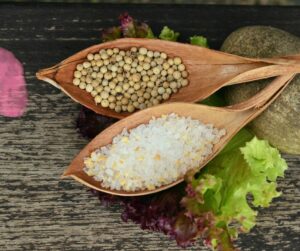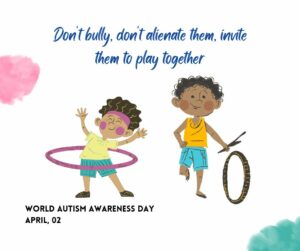“According to UN Human Settlements Programme (UN-HABITAT), about a third (32%) of the worlds’ estimated population dwell in slums or places characterized as one due to shortcomings such as lack of sanitation, poor housing structure and insecurity of tenure” (Scalr, E.D et al., 2005).
A projection that by 2030, about 1.7 billion people will be living in slums in under developed countries is alarming as, Nigeria houses one of the most populated cities in the world which is Lagos state, with a population of over 17.5 million.
African Ranking listed Makoko as the fifth worst slum in Africa, which has a population of over 80,000 people. Makoko has most of its structures built on water, which are made of wood and silts.
The environmental impacts of this slum are a major factor to consider when deciding if the settlement is harmful to the environment.
Environmental and Health Impacts of the Makoko settlement
1. Air pollution (Overcrowding):
Overcrowding which is a cluster of people in an uncomfortable manner is quite common in Makoko, houses meant for a family of two or three houses over ten individuals which leads to a shortage of oxygen causing breathing problems.
Suffocation can occur among infant as a result of lack of proper breathing. In areas such as Makoko, heart conditions are quite common because of overcrowding thereby affecting child mortality rate.
Overcrowding is one of the main sources of air pollution, a widespread of airborne diseases is common in such areas e.g. chicken pox, Tuberculosis, small pox, measles etc.
The Ebola virus was fortunate not to reach such locations, at it would have been an epidemic and led to multiple deaths within a short period of time. Air pollution does not just affect the indigenes of Makoko but also neighboring communities in close proximity.
2. Land pollution (Poor sanitation & waste disposal):
The people of Makoko defecate in the water and use the same water to cook and wash their clothing, this is a source of water pollution.
They have no waste collection scheme, thereby throw their refuse into that same water they drink.
Plastic, glass bottles, nylons, metal scraps and hazardous chemicals are just a few of the non-biodegradable waste that is left on the surface of the water, which causes a nuisance to the environment.
Looking from a distance, it should be assumed that humans wouldn’t live in such an environment these people call home. This is to say the level of sanitation there is next to zero, and actions must be taken.
3. Water pollution (Stagnant water):
In this part of the world mosquito bites are more than a myth, we experience it daily as thousands die from malaria in the nation.
Stagnant water is known to attract mosquitoes and other kind of insects which lead to various diseases. Typhoid fever, Malaria, Diarrhea, Dysentery are just some of the waterborne diseases common in such areas as a result of the water present in this area.
Asides that the smell of stagnant water is offensive, it could lead to other water related diseases such as Dengue Fever and Leptospirosis.
4. Aquatic Species Extinction:
Makoko indigenes are known for their fishing activities as far back as the early 90’s, they are said to be originally the Egun people from Badagry but moved to access the water for fish farming.
Air, land and water pollution would deteriorate the life of aquatic species and lead to an extinction. Pollution, over fishing, climate change and habitat loss are a few of the reasons aquatic animals go extinct.
Overcrowding leads to poor sanitation, waste disposal and stagnant water amongst many other environmental issues which contribute to the extinction of aquatic life.
SUMMARY: ENVIRONMENTAL DEGRADATION
Environmental degradation is the imbalance of the ecosystem of humans, plants and animals, it is a combination of all the various types of pollution and other environment related problem; it is the deterioration of the surrounding around us.
Makoko is a well-known slum worldwide but the growing population has become a source of concern for both the Government and neighboring communities.
On the 19th of February, 2017, the Makoko community suffered a major setback as their wooden houses was brought down by a fire outbreak which led to loss of properties and rendered many homeless.
If this was a first time event, it wouldn’t have raised so much alarm but November last two year a similar incident occurred. While speaking with the residents, they said it cost nearly N80, 000 for them to erect a new wooden structure.
Not to be pessimistic, but this will keep happening; fire outbreaks that would render hundreds homeless because their houses are made of wood and they use stoves to cook which can be gutted by fire at any given time.
SOLUTION
1. With a population of over 170 million, the poverty rate of Nigeria is at 62.6% (UNDP, 2017), this shows forcing the Makoko community to move out and relocate without creating another place for them would be unfair on their livelihood.
If the Nigerian Government (Lagos State in particular) can team up with International Bodies such as United Nations Development Program (UNDP), United Nations Environment Program (UNEP), World Bank and Non-Governmental Organisations to create well-structured houses with facilities for this people.
They would desist from littering the environment and take better care of their environment.
Using the Sustainable Development Goals (SDG’s) goals, all are applicable to Nigeria but some are specifically applicable to Makoko environment such as:
Goal 6: Clean water and Sanitation
Goal 13: Climate action
Goal 14: Life below water
Goal 15: Life on Land
When these goals are achieved, it would bring about a better standard of living for the people of Makoko.
2. Creating Awareness:
Most of the people in such communities are unaware of the havoc they are causing to the human race, plants and animals around. Informing them of the environmental impacts of their actions would improve the standard of living there.













